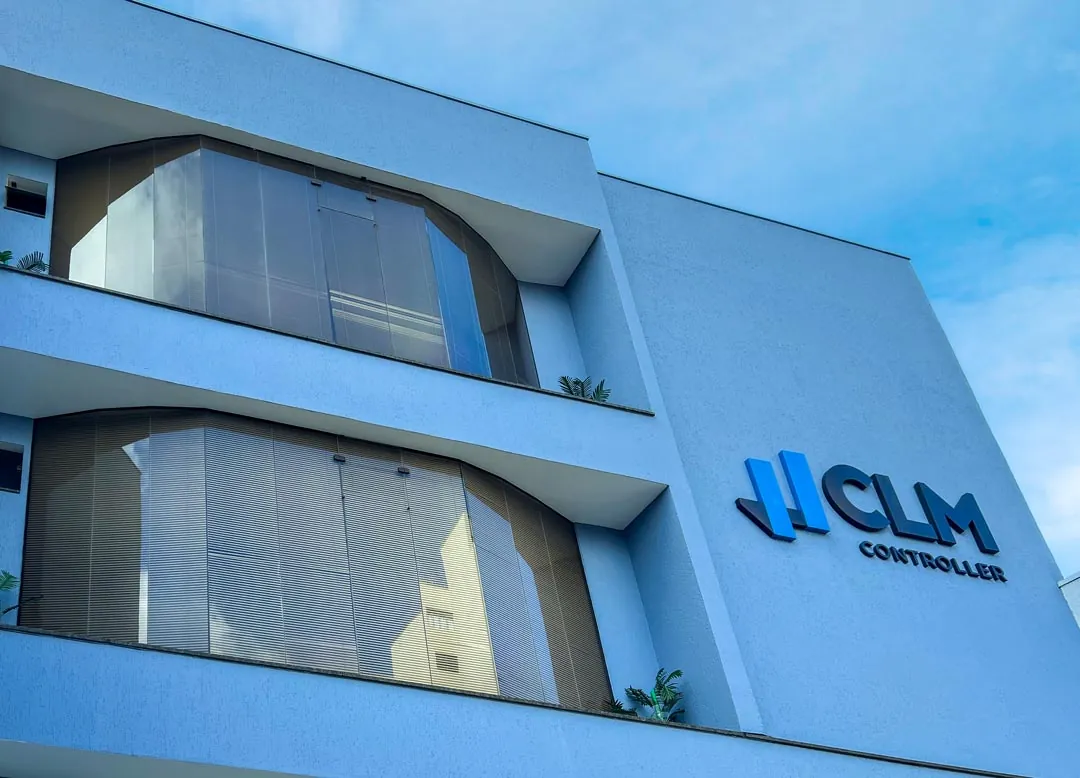In this direct and enlightening chat, Rodrigo Ribeiro e Marco Auréliodirectors of CLM Controller, comment on the changes in LCI taxation and explain how this measure can impact the real estate financing, the credit costs and financial planning of companies.
In the next few years, the Brazilian real estate market will face an important change: the taxation of LCIs (Letras de Crédito Imobiliário), which have always been known for their exemption from income tax.
In this article, we'll explain in detail what LCIs are, what changes [...] tax reformHow this affects real estate financing and what strategies investors, buyers and entrepreneurs can adopt to adapt to this new scenario.
What is LCI and why is it currently exempt from IR?
A Real Estate Credit Bills (LCI) is a fixed-income security issued by banks to raise funds to finance the real estate sector. In simple terms, when you invest in an LCI, you are lending money to the bank, which will use these funds to grant real estate loans (such as housing loans). In return, the investor receives interest on the amount invested, similar to other traditional fixed-income investments.
A major attraction of LCIs has always been the Income tax exemption for individualsThis is provided for by law as an incentive to invest in the real estate market. This means that all income earned on LCIs by individual investors is liquidwithout the tax bite.
Thanks to this tax advantage, LCIs are able to offer effective returns that are many times higher than savings accounts and even competitive with other taxed products, such as CDBs, even if the gross rate of the LCI is slightly lower. In addition, LCIs have the protection of the Credit Guarantee Fund (FGC) up to a limit of R$ 250,000 per CPF and per financial institution, providing security similar to that of savings accounts and CDBs for most investors.
This combination of attractive yields and no income tax has made LCIs a popular option among conservative investors looking for a good return on fixed income without paying tax. However, it is important to note that the exemption only applies to individuals.
Investments made by companies in LCIs are already taxed normally, without this benefit. Until now, therefore, LCIs had been providing high net gains with low riskIt has become an important part of investment strategies and a significant source of funds for real estate loans in Brazil.
What will change with the 2025 tax reform? The new taxation of LCIs

Inside Tax Reform 2025One of the federal government's proposals is to end the IR exemption on income from LCIs (and LCAs, their agribusiness equivalents). In June 2025, the Provisional Measure 1.303/25 foreseeing the collection of Income Tax at source, 5%, on securities that are currently exempt.
This rate fixed from 5% would be applied as of January 1, 2026, respecting the principle of annuality, and would initially apply to new investments made as of that date. In other words, investments in LCIs made up to 12/31/2025 would remain exempt until maturity, while bonds issued from 2026 onwards would be taxed on interest.
During its passage through Congress, however, Carlos Zarattini's report suggested adjustments. The most recent version of the proposal raises the IR rate to 7.5% on LCI/LCA income for individuals, instead of the initial 5%. At the same time, it kept other incentivized real estate securities like the CRI (Real Estate Receivables Certificates) and Real Estate Funds (FIIs) for individual investors.
In other words, LCIs would lose part of their exclusive tax advantage and would pay a modest - but no longer zero - income tax on new investments made after the law came into force.
It is important to note that, despite this change, the proposed taxation is still much lower than the rates for other fixed-income investments common. Today, a CDB, for example, pays between 15% and 22.5% in income tax (following the regressive table depending on the term).
LCI, on the other hand, would pay only 5% to 7.5%, depending on the final text approved. The government argues that this measure aims to reduce distortions in the market, bringing the tax burden between different financial products closer together and broadening the tax base without increasing direct taxes. Official estimates point to a potential additional revenue of up to R$ 18 billion over the next few years with the end of the exemption for LCIs/LCAs.
Another observation: only new investments will be affected. Those who currently own LCIs or apply until the end of 2025 should continue to be exempt from IR on these bonds until they mature, thanks to the transitional rule. This gives investors a window in which to adjust.
Even so, LCIs are expected to become more attractive gradually decrease from 2026, as the net return will be slightly lower than before. In the following topics, we'll see how this change can directly impact the real estate financingFor those looking to buy real estate and for the sector as a whole.
Impact on real estate financing: what changes for buyers and the market?

LCIs play a key role in real estate financingThis is because the funds raised by the banks via LCI are used for housing loans and real estate operations.
With the new taxation, several experts warn that the cost of real estate loans could riseThis will make financing more expensive for homebuyers and reduce the momentum of the real estate market as a whole. In other words, financing your own home could become more expensive in the coming years.
Industry associations such as CBIC (Brazilian Chamber of the Construction Industry)In the initial 5% IR proposal, they projected that there would be a significant impact: an increase of up to 0.7 percentage point in housing finance ratesincreasing the amount of installments paid by borrowers.
With the rate now suggested at 7.5%, the effect could be even greater. This means that a real estate loan that previously, for example, had an interest rate of 8% p.a. could rise to something like 8.5% to 8.7% p.a. due to the passing on of the additional cost - an increase that, over 20-30 years of financing, makes a difference in the buyer's pocket.
With the rate now suggested at 7.5%, the effect could be even greater. This means that a real estate loan that previously, for example, had an interest rate of 8% p.a. could rise to something like 8.5% to 8.7% p.a. due to the passing on of the additional cost - an increase that, over 20-30 years of financing, makes a difference in the buyer's pocket.
From the property buyerThis change, especially for those who rely on bank financing, can directly affect their budgets. Higher instalments or more difficult credit means that some consumers will be able to postponing the purchase of a home or having to look for lower-priced properties to fit into the monthly budget.
For those buying new properties from developers or used properties via financing, more expensive credit makes buying more costly and can reduce demand on the market.
Read also: The informality of rents is over, see what changes!
For this reason, representatives of the sector have expressed concern: according to the president of the Caixa Econômica Federal (main housing finance bank)In other words, it drives a chain of activities in the real estate sector - and taxing this instrument could curb this momentum.
For the real estate market as a wholeThe taxation of LCIs comes at a delicate time. In recent years, there have been sharp drop in savings accountswhich has traditionally been the main source of funds for housing loans in Brazil.
Data from Abecip (Brazilian Association of Real Estate Credit and Savings Entities) show that the share of LCIs in the sources of real estate financing doubled from 11% to 22% between 2020 and 2023while the share of savings fell from 47% to 31%.
This is because, with constant net withdrawals from savings accounts and high demand for real estate credit, banks have increasingly turned to LCIs to raise money and continue lending for the purchase and construction of real estate.
In this context, taxing LCIs could cool down this crucial alternative source of funding. If fewer investors are interested in LCIs (or demand higher interest rates to invest), banks may find it difficult to maintain the volume of real estate loans at the same pace.
Ultimately, this could mean scarcer or more expensive credit for building new homes and developmentsThis will have an impact on developers and the entire construction chain.
In short, the direct impact of LCI taxation on real estate financing should be a gradual increase in interest rates on housing loans and possibly a smaller supply of credit than there would be if the exemption were maintained.
The exact effect will depend on how banks and investors react to this change (as we'll see below), but it's prudent for buyers and market players to prepare for a scenario of slightly less advantageous financing from now on.
The relationship between LCIs and bank funding and real estate credit

LCIs exist precisely to connecting income-seeking investors with the banks' need to obtain resources to lend in the real estate sector.
Before this change, this connection was beneficial for both sides: the investor earned a good tax-free return, and the bank got money at a lower cost to pass on in financing. This is because, due to the tax exemption, investors accepted earning a lower rate on LCIs than they would have demanded on other products with a similar risk, such as CDBs or government bonds.
In practice, the LCI lowers funding costs for the banks, since they could pay, for example, 95% of the CDI on an LCI (which was equivalent to 95% net for the individual investor), instead of having to pay 110% of the CDI on a CDB to offer the same net return (taking into account CDB taxation).
With the taxation of LCIs, this dynamic partially changes. Investors will demand a higher return for LCIs, as they will now have to deduct IR from the interest received. If 95% of the net CDI was already attractive, now you'll have to pay a higher percentage of the CDI to achieve the same net yield.
Experts calculate that for an LCI with a term of ~1 year that yields 100% of the CDI exempt, it will need to yield around 107-108% of gross CDI to deliver the same net 100% at a rate of 7.5%. In other words, banks will have to raise the rates offered on new LCIs to continue raising funds from individual investors. This increase in the cost of funding tends to be passed on, at least in part, to the interest charged on real estate loans (or reduced margins for banks).
It's worth remembering that banks already have other sources of funding for real estate loans, mainly the savings accounts and also instruments such as LIG (Letra Imobiliária Garantida) and securitization (CRI).
Savings accounts, for example, have regulated interest rates (currently 6.17% per year + TR when the Selic rate is above 8.5%) and are exempt from IR, but in recent times they have suffered high net withdrawals, limiting their contribution to the sector.
LIGs and CRIs are alternatives: CRI (Real Estate Receivables Certificates) are securities backed by real estate credits, also exempt from personal income tax and used to raise money for specific projects or financing portfolios. However, CRIs generally don't have the FGC guarantee and can have higher risks, so they pay higher interest rates and are more sought after by sophisticated investors.
With the taxation of LCIs, it is possible that part of the resources migrate to competing products. Investors who value the exemption can opt for CRI/CRA (which are still exempt) or by Real Estate Funds (FIIs)These are the products that have had their income exemption maintained in the reform. However, it is important to note that each product has different risk, liquidity and term characteristics.
A savings should remain exempt and have daily liquidity, but their profitability tends to be lower in high interest rate scenarios (and depends on the government's interest rate policy). Now incentivized debentures (such as infrastructure) are still exempt for individuals in the new proposal, but they are not focused on real estate and generally finance other sectors.
For banks, the challenge will be reorganizing the funding mix for real estate loans. If LCIs become less attractive and funding falls, they may resort more to CRIs or other instruments, or even limit the supply of credit a little.
Some banks may pass on the full 5-7.5% rate to the investor (offering slightly higher interest on new LCIs) in order to keep their bills competitive. Others may promote their real estate funds or securitized credit portfolios more as a way of raising money.
In short, the LCI will continue to be an important piece of the housing finance puzzle, but will have a higher cost of funding for banksThis will require them to adapt to this new scenario. And, as we have seen, this tends to result in slightly less advantageous conditions for real estate borrowers.
Market and expert reactions to change
The proposal to tax LCIs provoked several reactions from financial and real estate market entities. On the one hand, the government and some economists defend the measure as necessary to increase revenue and correct distortions.
According to the Ministry of Finance, "bonds will no longer be exempt but will continue to be highly incentivized"5% (or even 7.5%) is still a low rate compared to the 15%-17.5% charged on other investments.
In this sense, it is argued that the advantage of the LCI doesn't end, it just decreases a littleThis makes competition between products fairer and avoids investment decisions being guided solely by tax differences.
On the other hand, representatives of the real estate sector, banks and investors have expressed concerns. A Abecipthe association of real estate credit institutions, warned that LCIs play a strategic role in housing finance, even more so now that savings accounts have run out of steam, and that taxing these securities could be a good idea. raising final interest rates for consumers and reducing the supply of credit.
A CBIC and other civil construction organizations have even drawn up technical notes pointing out negative impacts, such as the possible increase of up to 0.7 percentage points in financing rates, as mentioned.
Investment experts have commented that the change, despite reducing the attractiveness of LCIs, it doesn't make them unfeasible. Many point out that even with 5%-7.5% tax, the LCI will still have interesting net yields and lower IR than most fixed-income securities. In the short term, it's possible that there will be some migration of funds to tax-free alternatives (such as CRIs, FIIs or savings accounts), but we also expect a gradual adaptation of the fixed income market.
Another point mentioned by analysts is the macroeconomic situation. If the economy's basic interest rates fall again in the next few years (which tends to happen if inflation remains under control), the difference in profitability between products could change.
In short, the market received the news of the taxation of LCIs with a dose of concern, mainly due to the fact that potential effect on real estate loans. However, many recognize that "came out less worse than it could have" - After all, a small rate is being discussed (5-7.5%) and several products remain exempt (FIIs, CRIs, etc.), unlike the feared scenarios in which even real estate funds would lose their exemption.
Even so, the almost unanimous recommendation among experts is: follow closely the passage of the law and its developments, and already adjust to the new fixed income normal with a little tax.
Strategies and recommendations for investors and buyers facing the new scenario
Faced with the taxation of LCIs, both investors and those planning to buy financed real estate should adopt strategies for adapt smoothly. Here are some practical recommendations:
- Re-evaluate your investment strategy: If you're an investor, it's time to review the composition of your fixed income portfolio. LCIs are still good optionsBut now they require a closer look at net income.
- Anticipate opportunities (when possible): Until the end of 2025, it is still possible to find LCIs exempt from IR. If there are offers with attractive terms and rates that fit in with your strategy, consider investing before the turn of the year can guarantee tax-free yields until the bond matures (remembering that after 2026, new LCIs will be taxed).
- Keep an eye on mortgage rates: If you're planning to buy a property with a mortgage, keep an eye on interest rates over the next few months. As we explained, there is pressure for a slight increase in financing rates due to the taxation of LCIs.
- Negotiate and compare credit options: Banks may react differently to this change. Some may immediately raise interest rates on loans; others may hold off so as not to lose customers, or create temporary promotions.
- Rely on specialized help: For both investments and real estate financing, this is a time when consulting experts can make a difference.
Conclusion
The taxation of LCIs represents a significant change in the Brazilian real estate market. It will impact investors, buyers and financial institutions alike, requiring planning and adaptation. Although yields may decrease and interest rates increase slightly, with the right strategy and guidance it is possible to minimize impacts and take advantage of opportunities.
A CLM Controller is an accounting firm with over 40 years' experience, specializing in Real Profit and Presumed Profit companies, working in various areas such as accounting, tax, finance and payroll. We also offer strategic consulting, tax planning and specialized auditing to ensure that your company is always in compliance and makes the most of tax opportunities.
Do you want to understand how changes in taxation can affect your investments and business? Get in touch and speak to one of our experts today.











